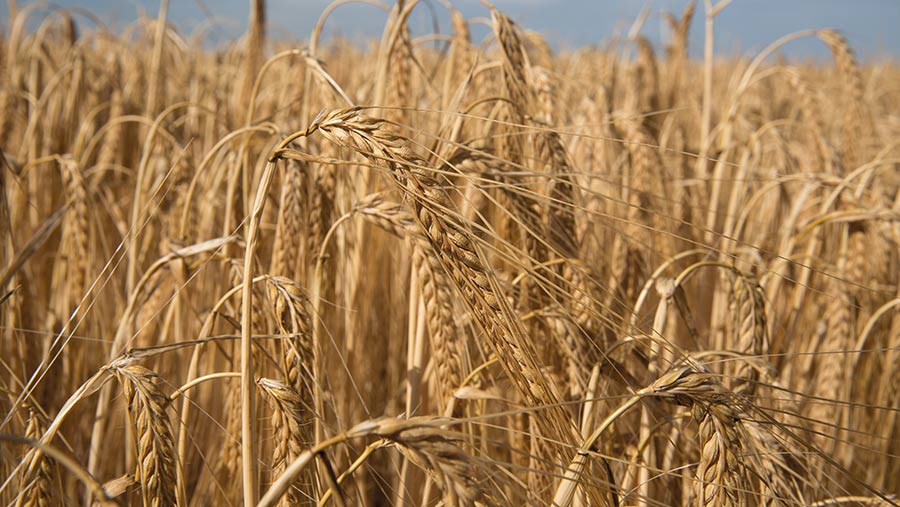Harvest 2023: Waiting for dry weather window to continue cutting
 © Tim Scrivener
© Tim Scrivener Farmers need a weather break to get safely started with their harvest, but the week ahead is not forecast to allow it. Specific weights are suffering as a result and lodging fears are emerging.
See also: Wheat area down 3% while OSR up 11% this harvest, says survey
Norfolk
At Shrubbery Farm, near Carleton Rode, Barry Garner finished his 20ha of Tardis winter barley a couple of weeks ago. It came off at 13-14% moisture, yielding 10t/ha with a specific weight of 67-68kg/hl.
“In a good year it will go over 70kg/hl, but some people are struggling this year, so we’re satisfied,” says Barry.
Next to combine will be 50ha of Laureate spring barley.
“There’s an awful lot of green. I think it will have to be desiccated before we can combine it.”
After that will be 40ha of winter feed wheat consisting of Dawsum, Typhoon and Gravity.
“We have had 90mm of rain in July and a lack of sunshine, so I’m worried about specific weights.”
Some of Barry’s neighbours have been unable to start winter barley harvest due to the persistent rain.
“You can have somebody combining, and then five miles away they can’t as they’ve had a shower – it’s been that sort of season,” he says.
Derbyshire
It’s a similar story at Glebe Farm near Shardlow, where James Chamberlain cut 85ha of Duplo and Ambassador oilseed rape.
“We’ve been taking it at 13% moisture, down to 10% when the weather allowed,” he says.
“It’s wet and we are currently drying it but are anticipating 4.5t/ha.”
The crop got off to a good start without any significant issues with cabbage stem flea beetle, says James.
“At the beginning of March, the growth area index was 2.5, so the rape captured readily available nutrients, meaning we were able to cut back on artificial nitrogen applied in the spring.”
Next to cut is 100ha of Attila winter linseed, which will be ready as soon as there’s a weather window.
“It is all mature and has been desiccated, but we just can’t go as the weather is not with us,” says James.
Herefordshire
Across at White Hall Farm, near Hampton Bishop, Jamie Rogers cut 11ha of Bolton feed barley on Friday 21 July, which yielded 8.4t/ha at 14-15% moisture content. “It looks a decent sample, and should make 63kg/hl,” he says.
“I sprayed it off with Roundup a few weeks before and the straw was baled and stacked before it hammered down over the weekend. We managed to snatch some decent weather on Wednesday to get stubble turnips in behind it.”
Jamie hopes to start his 53ha of Acacia oilseed rape on Saturday after spraying it off two weeks ago, and is concerned about lodging in the other crops.
Dorset
Further south, Clive Tory combined 71ha of hybrid Ambassador and Auckland oilseed rape at South Farm, near Spetisbury, from 18-20 July, with an average moisture content of 7.5%, a yield of 4t/ha at 45.86% oil content.
Next to come will be 189ha of winter wheat, starting with Extase milling wheat.
“I’m concerned about the weather for the Extase to produce a milling sample; we had 18mm of rain on 26 July and that’s not good leading up to harvest,” says Clive. “We’re on 110mm for July.”
After Extase will be feed wheats Graham and Dawsum. “We’ve been foliar feeding at the time of T3, using fungicide with liquid nitrogen and potash too,” he adds. “We want to see whether it can increase specific weights.”

